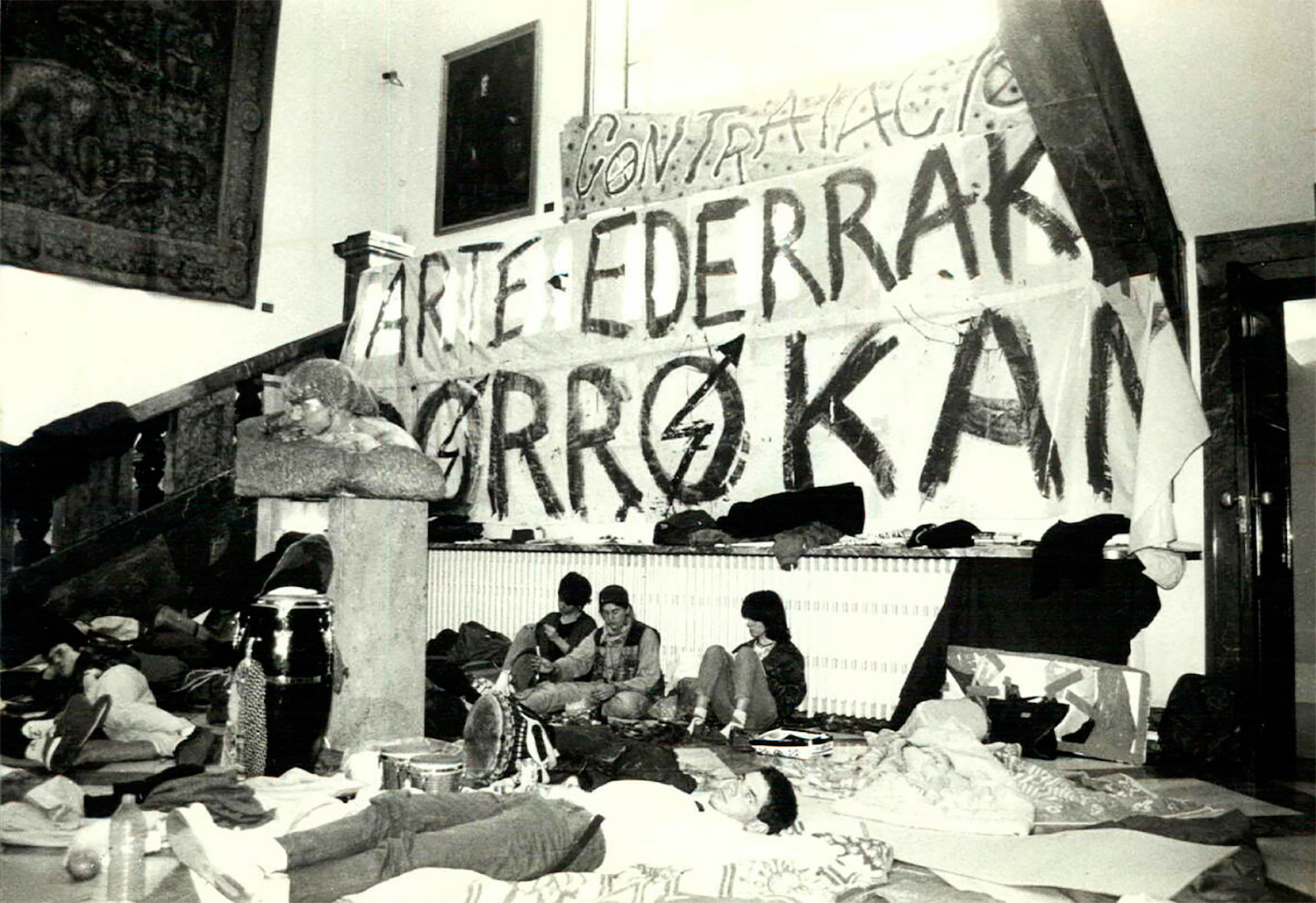
In 1994, the Fine Arts students of the UPV/EHU began protests. The three-month strike took place to obtain five Euskaldunes professors while occupying the faculty of Leioa. They enjoyed broad support from Basque society, but they also suffered police repression, such as the arrest of several students for occupying the Museum of Fine Arts in Bilbao. The faculty's Euskera Commission has launched the Protestaka exhibition, which will remind those present. You will be able to visit until 13 December in the exhibition hall of Fine Arts in the capital of Biscay.

The students of Fine Arts of the UPV/EHU fought "unforgettable" in 1994, just as the journalist of ARGIA Leire Artola wrote in the report Of asking five Basque professors to put the university upside down. "Hundreds of students mobilized for one simple reason: they wanted to learn Basque." The objective was to obtain the Euskaldunes professors who were necessary to be able to complete their studies in Euskera.
The protests that began in the Faculty were also transferred to Bilbao, where they died hours later. 200 students tried to occupy the Museum of Fine Arts on 2 November 1994. They weren't allowed to walk in saying the museum was closed. Several students went up to the roof to put a banner and were accompanied by museum staff. When the Ertzaintza approached, he attacked those who were sitting outside the door, causing several injuries and arresting seven of them.
.jpg)
"They created songs, made stickers, made posters and banners, gave concerts in the university and performed performances in the streets of Bilbao," said the members of the Euskera Commission, at a dinner dedicated to the exhibition. "The newspaper announced the protests and Negu Gorriak sang with police violence. To date, demonstrations have also been written, mobilisations have been made, videos have been created, social networks have been used, posters have been made, written in Berria and in ARGIA".
In three months, in addition to these five professors, a total of 80 Basque teachers were hired at the UPV/EHU, according to the organizers of the exhibition. "The University since then is another: more Euskaldun. 30 years later, the demands have not been exhausted and the student movement for the Basque is rearming. This struggle has been taken as the starting point of the exhibition to relate it to the linguistic struggle of today's students".
In this sense, they have highlighted "the artistic aspect of the connection between the two". They have collected material from the time and the present day: objects, posters, news and photos.